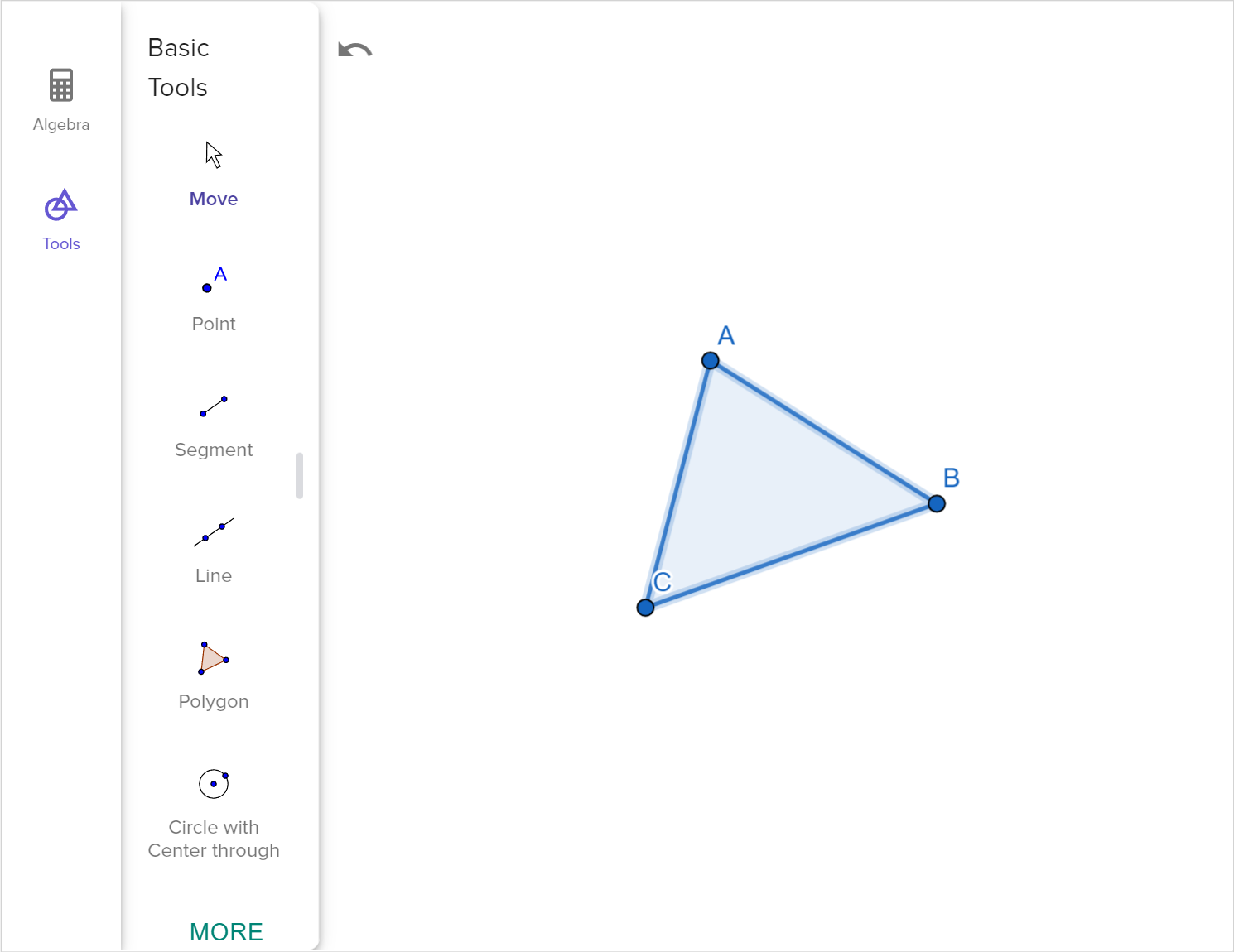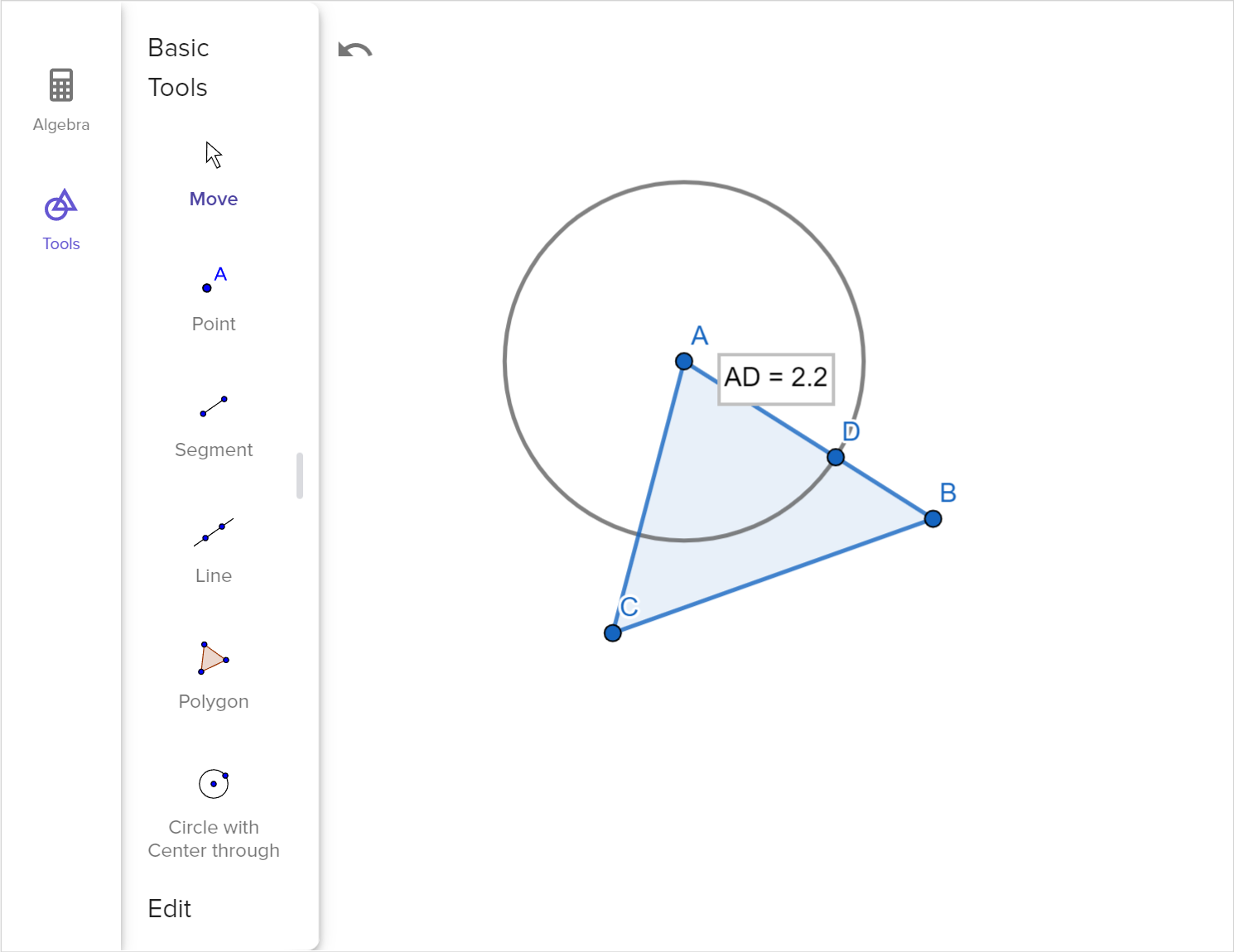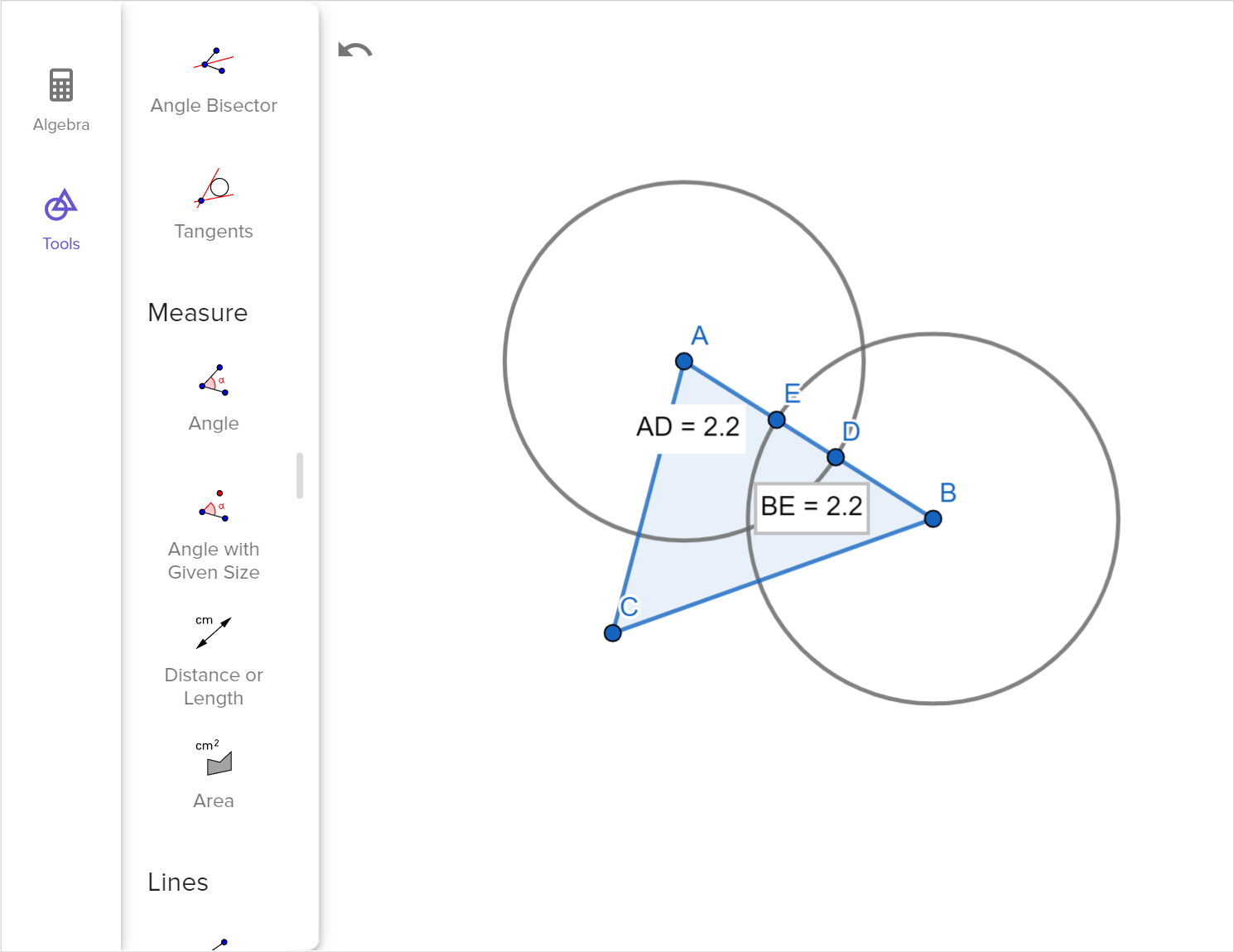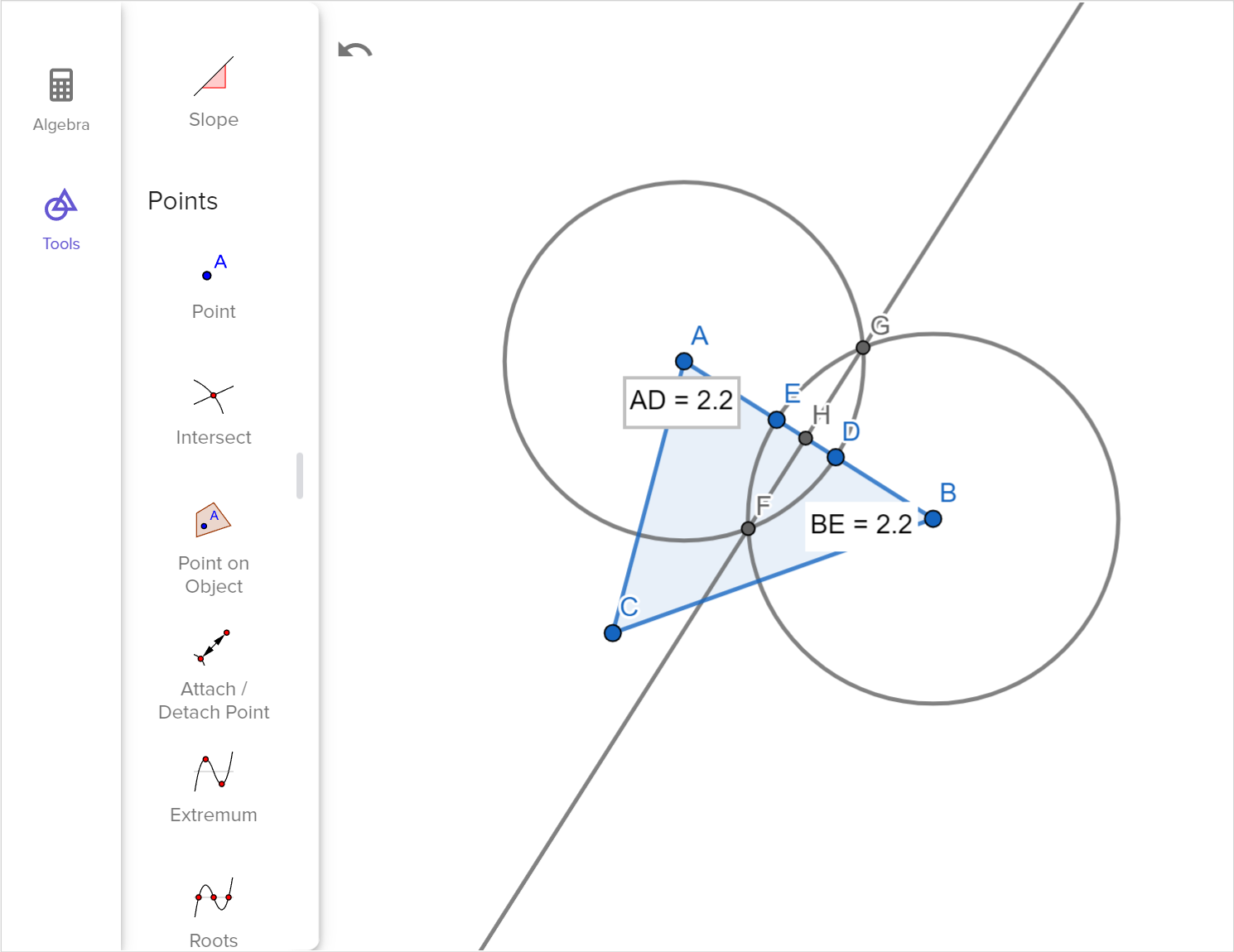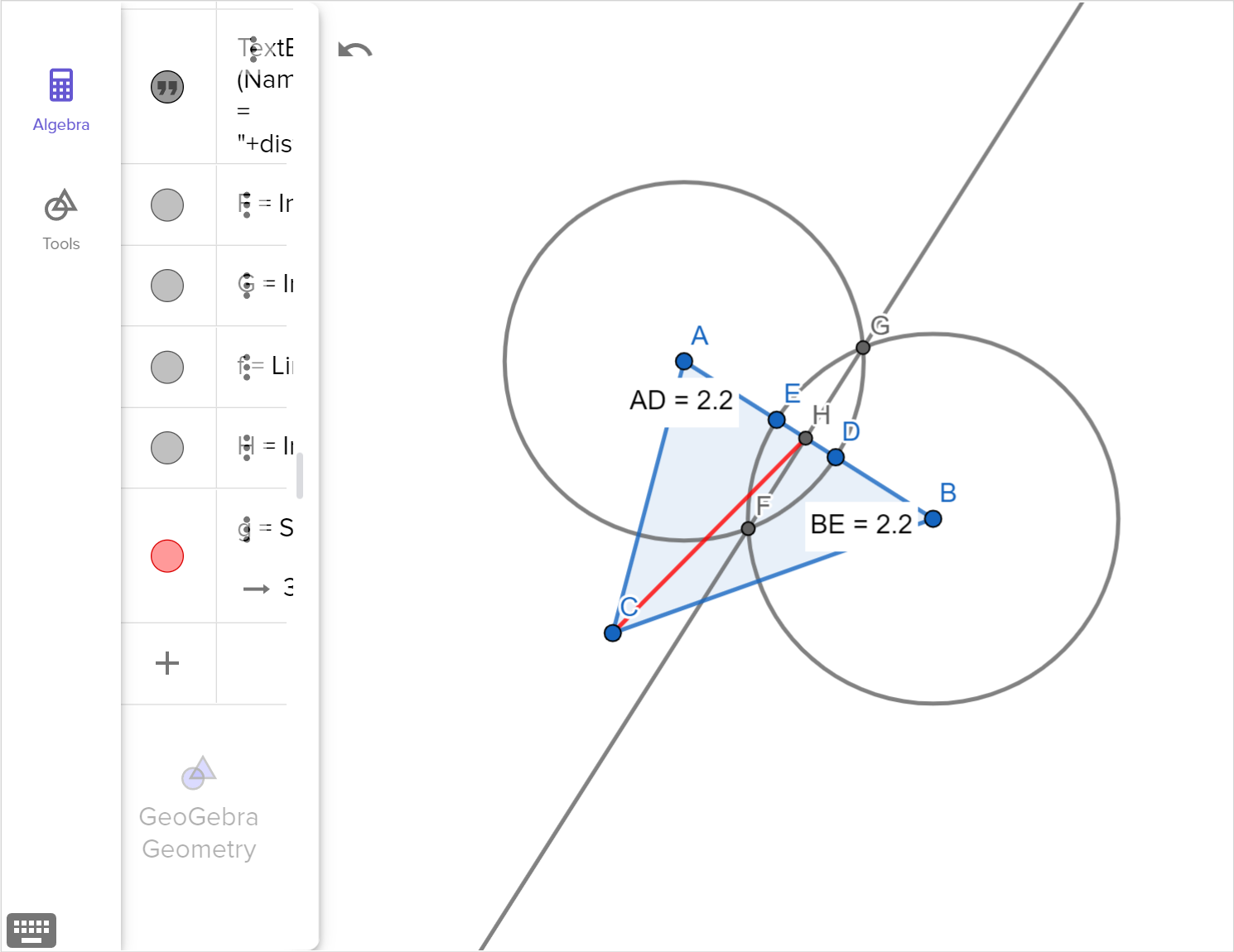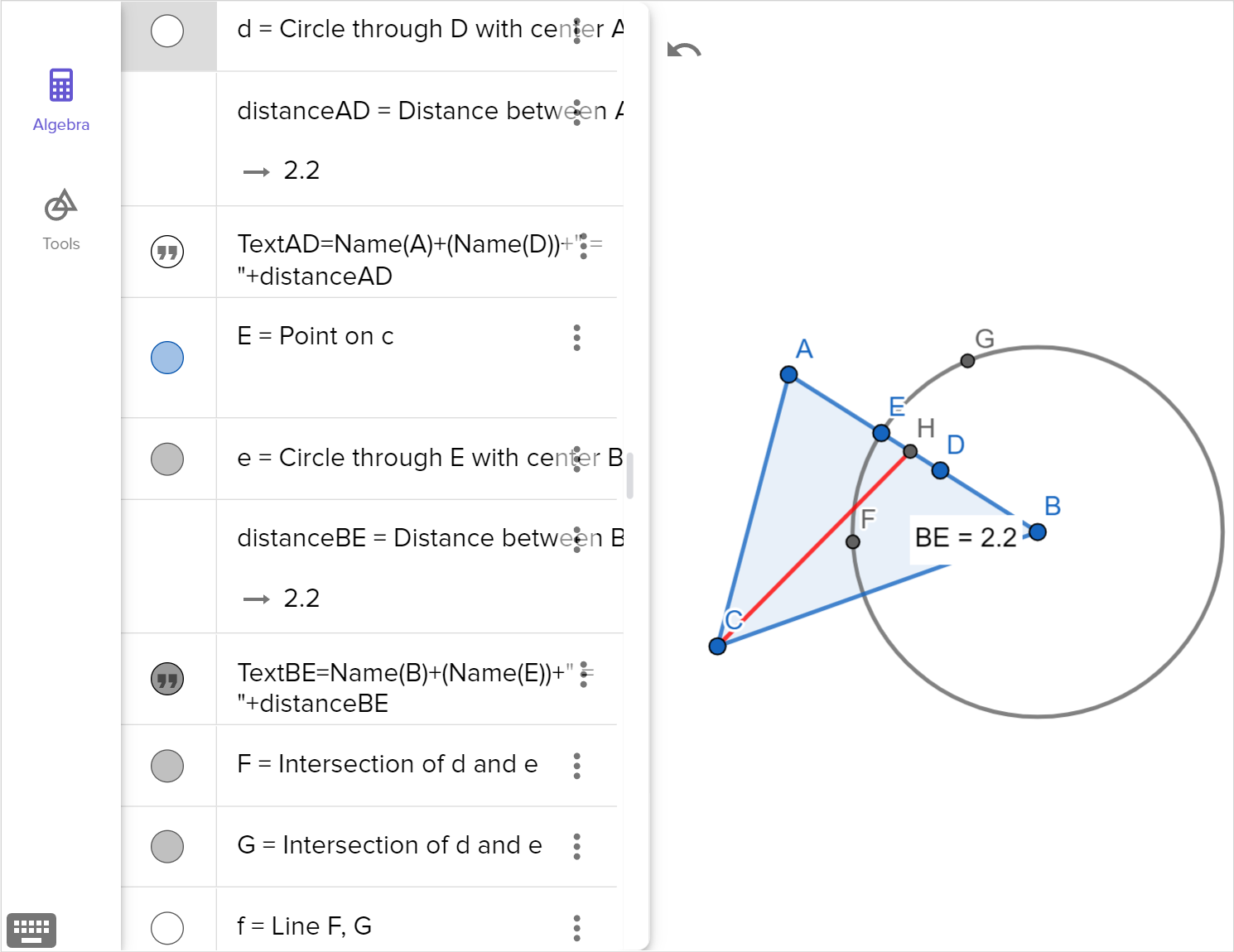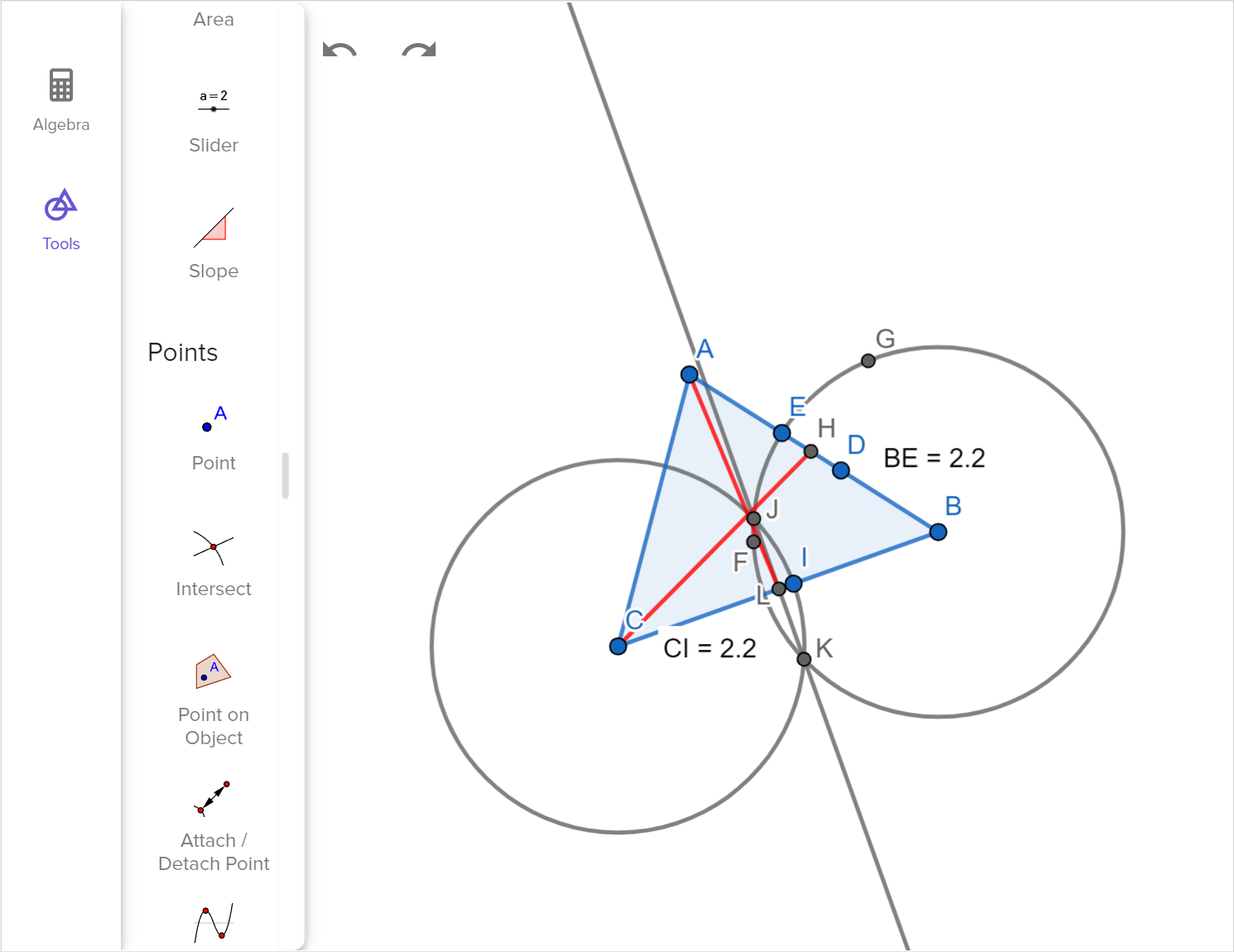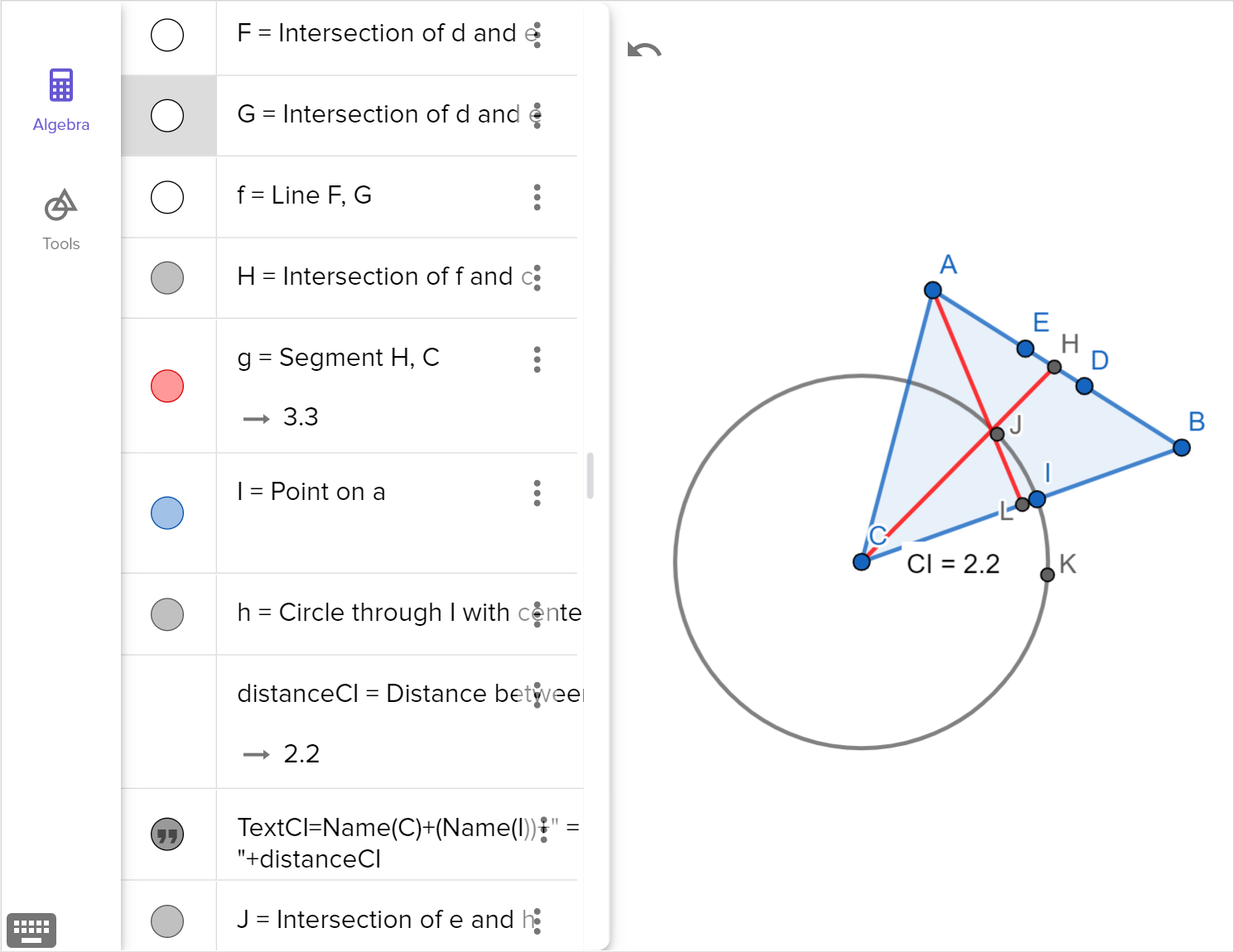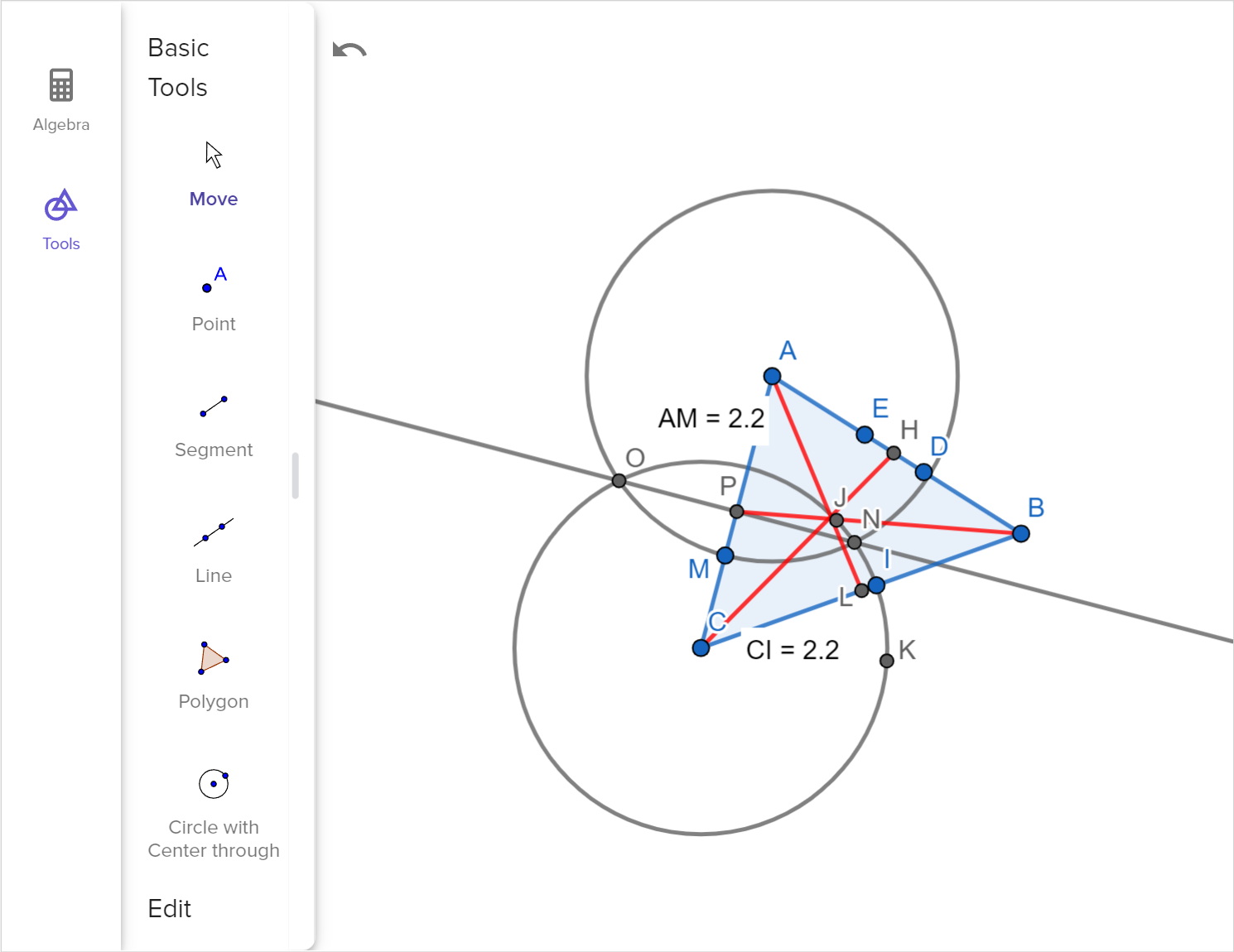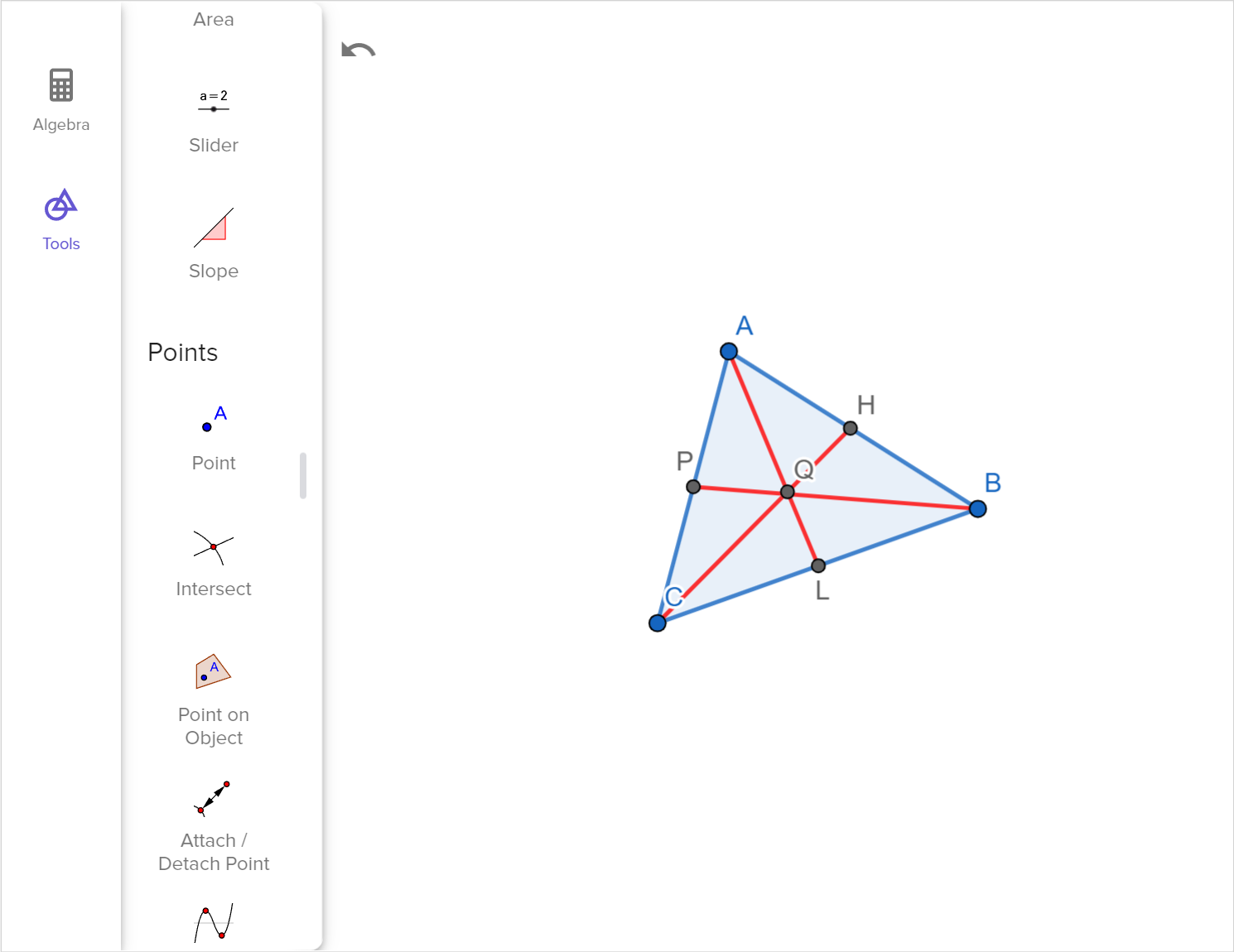3.05 Medians and altitudes
Introduction
In lesson 3.04 Angle and perpendicular bisectors , we learned about angle relationships in triangles, vocabulary for their points of concurrency, and practiced constructions. We will learn about new vocabulary here related to side length relationships in triangles, vocabulary for different points of concurrency, and practice constructions.
Medians
Exploration
Create different triangles by dragging the vertices. Explore the different features by checking the boxes.
- What relationships do you notice between the angle bisectors and medians?
While angle bisectors and medians seem to be the same segments in triangles, they are different segments. The incenter is the point of concurrency of the angle bisectors of a triangle which divide each angle in half. The centroid is the point of concurrency of the medians of a triangle, which divide each side length of the triangle in half.
The incenter and centroid of a triangle are always located inside the triangle, regardless of the angle measures. In the diagram shown below, the centroid is shown with the medians of the triangles.
For an equilateral triangle, the incenter, circumcenter, and centroid all coincide at the same point and the medians are the same segments as the angle bisectors.
Examples
Example 1
In the following diagram, \overline{BD} is a median. If all measurements are in inches, determine the length of leg \overline{CB}.
Example 2
G is the centroid of the triangle.
Describe the relationship between \overline{CD} and \overline{BD}.
Find the value of x.
Find the length of \overline{BG}.
Example 3
Construct the medians and centroid of a triangle.
The median is a line segment whose endpoints are a vertex of the triangle and the midpoint of the opposite side. The point of concurrency of the medians of a triangle is called the centroid, which will always be located inside of a triangle.
The centroid theorem states that the medians of a triangle intersect at a point that is two thirds of the distance from each vertex to the midpoint of the opposite side.
Altitudes
Exploration
Create different triangles by dragging the vertices. Explore the different features by checking the boxes.
- What relationships do you notice between the perpendicular bisectors and altitudes?
While perpendicular bisectors and altitudes form perpendicular lines with the side lengths of triangles, they are different segments. The circumcenter is the point of concurrency of the perpendicular bisectors of the triangle which divide the line segments of a triangle in half. The orthocenter is the point of concurrency of the three altitudes of a triangle, which are perpendicular segments formed from the vertices of a triangle.
It is possible for a line segment to be both a median and an altitude of a triangle.
Unlike the centroid that is always internal, in some cases, the altitudes of a triangle may connect at an orthocenter external to the triangle.
The orthocenter behaves similarly to the circumcenter of a triangle (see lesson 3.04 Angle and perpendicular bisectors ). The orthocenter will be located inside an acute triangle, outside of an obtuse triangle, and on the hypotenuse of a right triangle.
Examples
Example 4
Determine if \overline{AX} is a median, altitude, both, or neither.
Example 5
For the following triangle, \overline{BD} is an altitude of \triangle{ABC}. Solve for x.
Example 6
Construct the altitudes and orthocenter of a triangle.
The altitude is the perpendicular line segment drawn from the vertex of a triangle to the opposite side. The point of concurrency of the altitudes of a triangle is called the orthocenter, which may be located outside of the triangle.
Medians and altitudes can at times be the same segment in a triangle, and can also be related to angle bisectors and perpendicular bisectors in isosceles triangles and equilateral triangles.
